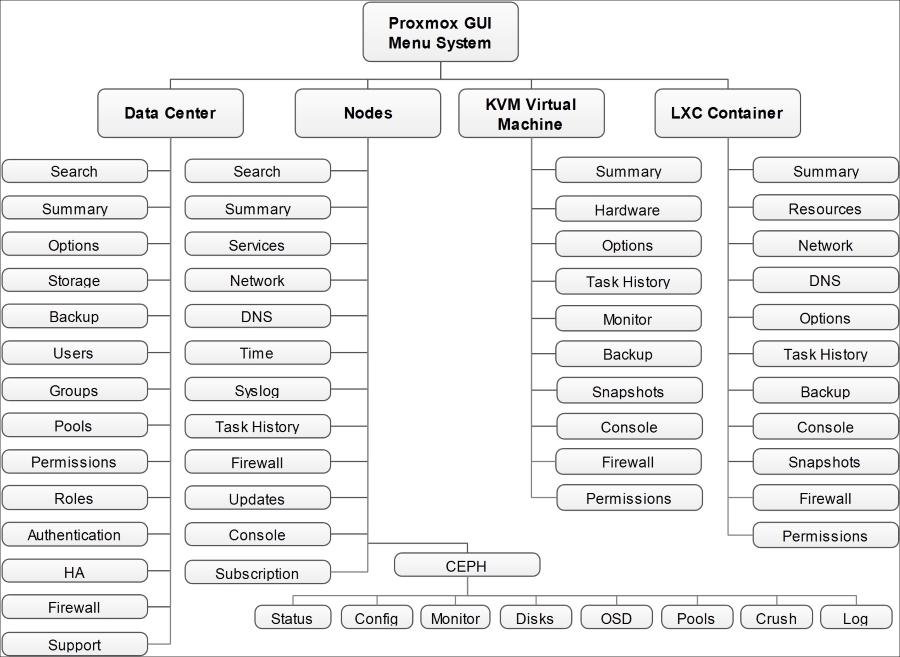The Proxmox GUI is a single page administration control panel. This means that no matter which feature one is managing, the browser does not open a new page or leave the existing page. Menus on the admin page change depending on which feature is being administered. For example, in the preceding screenshot, the pm4-1 node is selected, so the main menu only shows node-specific menus. If a virtual machine is selected, the menu looks like the following screenshot:

The following chart is a visual representation of the Proxmox GUI menu system. Some menu options are system settings that need to be set up once during installation and do not need any regular attention, such as DNS, time, and services, and so on. Other menu items require regular visits to ensure a healthy cluster environment, such as Summary, Syslog, Backup, Permissions, and so on:




